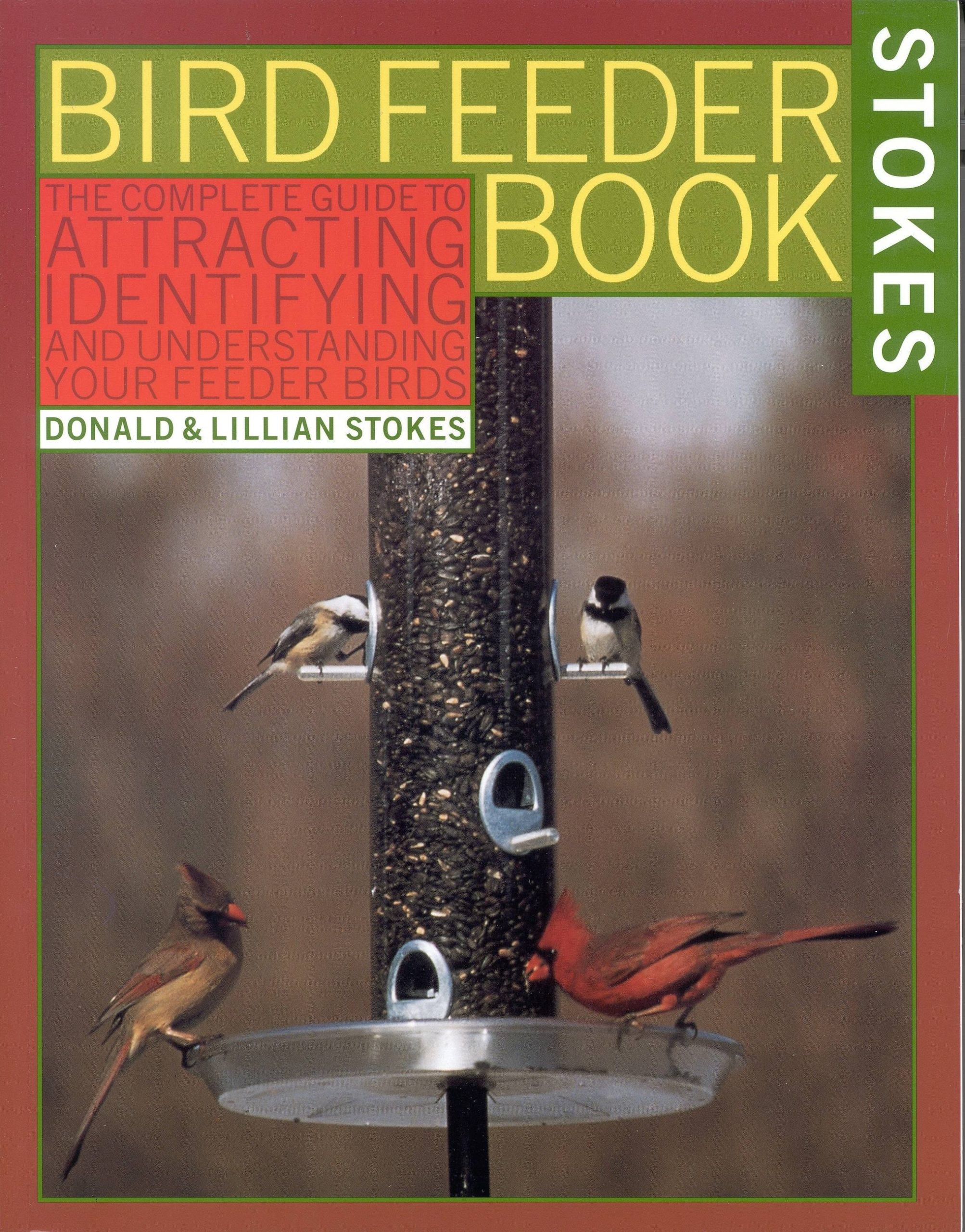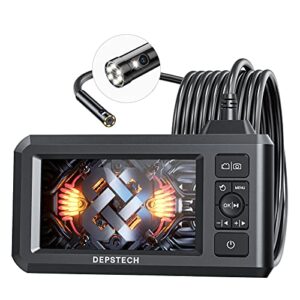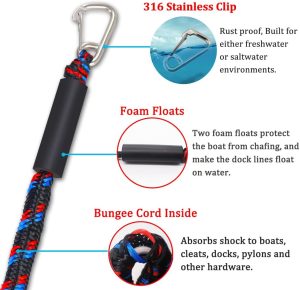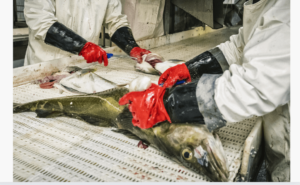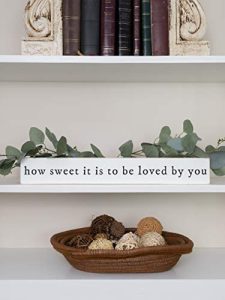Contents
- Why Peanut Bird Feeders Are An Ideal Choice
- Understanding Different Types Of Peanut Bird Feeders
- Selecting The Right Location For Your Peanut Bird Feeder
- Types Of Peanuts To Use In Your Bird Feeder
- Maintenance And Cleaning Of Peanut Bird Feeders
- Tips For Attracting Colorful Birds To Your Peanut Bird Feeder
- Troubleshooting Common Issues With Peanut Bird Feeders
- Observing And Enjoying Colorful Birds At Your Peanut Bird Feeder
- Additional Ways To Attract Colorful Birds To Your Yard
- Frequently Asked Questions For Peanut Bird Feeders
- Conclusion
Peanut bird feeders are popular options for attracting a variety of birds to your yard. They provide a convenient way to offer peanuts to birds, especially those that prefer nuts as their primary food source.
These feeders typically consist of a mesh or wire cage that holds peanuts, allowing birds to easily access the nuts while preventing larger birds or squirrels from stealing the food. By using peanut bird feeders, you can enjoy the sight of colorful birds such as woodpeckers, jays, and titmice feasting on peanuts in your backyard.
Additionally, peanut bird feeders can be a great way to support the health and well-being of birds during colder seasons, when natural food sources may be scarce.
Why Peanut Bird Feeders Are An Ideal Choice
Peanut bird feeders are a great choice for attracting a wide variety of feathered friends. These feeders provide a high-energy food source that birds love, offering both entertainment and a reliable food supply for birdwatchers.
Peanut Bird Feeders:
Did you know that using peanut bird feeders can be a game-changer when it comes to attracting a wide variety of beautiful birds to your yard? These feeders are not only beneficial to the birds themselves but also offer a delightful sight for any bird lover.
In this section, we will explore the benefits of using peanut bird feeders, the types of birds they attract, and the advantages of having colorful birds frequenting your outdoor space.
Benefits Of Using Peanut Bird Feeders:
- Highly Nutritious: Peanuts are packed with protein, fats, and essential nutrients that provide birds with the energy they need to survive and thrive.
- Versatile Feeding: Peanut bird feeders accommodate various bird species, including woodpeckers, chickadees, jays, nuthatches, and many more.
- Minimal Waste: Unlike other bird feeders, peanut bird feeders are typically designed to prevent spillage and reduce waste, ensuring that your feathered visitors have easy access to their favorite treats without unnecessary mess.
- Weather Resistant: Many peanut feeders are built with durability in mind, capable of withstanding different weather conditions. This means that they can be a reliable food source for birds all year round.
- Easy to Refill: Refilling a peanut bird feeder is a breeze, providing a convenient way for you to maintain a consistent supply of food for your avian friends.
Types Of Birds Attracted To Peanut Feeders:
- Woodpeckers: These birds are known for their strong beaks and exceptional climbing abilities. Peanut bird feeders serve as an irresistible attraction for various woodpecker species, including the Downy Woodpecker, Pileated Woodpecker, and Red-bellied Woodpecker.
- Chickadees and Nuthatches: With their agile nature and small size, chickadees and nuthatches are expert foragers. Peanut bird feeders are a magnet for these charming birds due to the nutritious peanuts they offer.
- Jays and Bluebirds: Thanks to their voracious appetite, jays and bluebirds flock to peanut bird feeders for a hearty meal. Their colorful plumage and lively personalities will undoubtedly grace your yard with a vibrant touch.
Advantages Of Attracting Colorful Birds To Your Yard:
- Aesthetics: Colorful birds bring life and vibrancy to your outdoor space. Their presence can transform an ordinary yard into a visual paradise, where nature’s artistic display is ever-changing.
- Educational Opportunity: Having a diverse range of birds visiting your yard opens up an excellent learning experience for kids and adults alike. Observing and identifying different bird species fosters a deeper appreciation and understanding of the natural world.
- Ecosystem Balance: Colorful birds play a crucial role in maintaining the ecological balance of your yard by controlling insect populations and dispersing seeds, aiding in the growth of flora.
- Stress Relief: The calming sounds of birds chirping and the sight of vibrant wings fluttering can provide a sense of tranquility, making your yard a peaceful retreat from the hectic pace of daily life.
So, if you’re looking to attract a diverse array of birds to your yard while providing them with important nourishment, peanut bird feeders are an ideal choice. Not only will you enjoy the beauty of these feathered visitors, but you will also contribute to the preservation of these captivating creatures and our shared ecosystem.
Understanding Different Types Of Peanut Bird Feeders
Discover the various types of peanut bird feeders available, catering to different bird species and feeding preferences. From mesh feeders to tray feeders, explore the options to attract a variety of birds to your backyard.
Having a peanut bird feeder in your backyard can be a great way to attract a variety of feathered friends. These feeders are specifically designed to hold peanuts, allowing birds to feast on these nutritious treats. If you’re considering adding a peanut bird feeder to your outdoor space, it’s important to understand the different types available.
Here, we’ll explore three popular options: hanging peanut feeders, pole-mounted peanut feeders, and window-mounted peanut feeders.
Hanging Peanut Feeders:
- These feeders are suspended from trees, hooks, or other elevated structures, creating a convenient feeding spot for birds.
- They typically feature a mesh design or small holes that allow birds to access the peanuts easily.
- Hanging peanut feeders can accommodate multiple birds at once, making them suitable for busy birdwatching areas.
- They can also be placed at different heights to attract different bird species.
Pole-Mounted Peanut Feeders:
- Pole-mounted peanut feeders are attached to freestanding poles, offering stability and versatility in placement.
- The rugged design of these feeders makes them more durable and resistant to harsh weather conditions.
- They often feature a larger capacity, allowing you to fill them with a generous amount of peanuts.
- Pole-mounted peanut feeders can be placed in open areas, giving birds a clear vantage point while feeding.
Window-Mounted Peanut Feeders:
- As the name suggests, these feeders attach directly to your window, providing an up-close and personal birdwatching experience.
- They provide a clear view of birds as they feast on peanuts, making them ideal for close-up observations and photography.
- Window-mounted peanut feeders are usually compact and easy to install, requiring minimal space and effort.
- They offer a unique opportunity to create an intimate connection with birdlife right from the comfort of your home.
With these different types of peanut bird feeders, you can choose the option that best suits your preferences and outdoor setup. Hanging feeders are versatile and suitable for various bird species, while pole-mounted feeders provide stability and larger capacity. If you prefer a more intimate birdwatching experience, window-mounted feeders are an excellent choice.
Whichever type you choose, peanut bird feeders offer a delightful way to connect with nature and attract beautiful birds to your backyard.
Selecting The Right Location For Your Peanut Bird Feeder
Selecting the perfect spot for your peanut bird feeder is crucial in attracting and catering to a wide range of feathered friends. Consider choosing a location near trees or shrubs, away from predators, and easily accessible for refilling.
Peanut Bird Feeders:
Interested in attracting a variety of birds to your garden? Look no further than a peanut bird feeder. These feeders provide a nutritious snack for our feathered friends and can be a delightful addition to any backyard. When it comes to positioning your peanut bird feeder, selecting the right location is crucial.
Read on to discover the factors to consider, how to create a safe environment for the birds, and how to attract them with proper positioning.
Factors To Consider When Choosing A Location:
- Shelter: Place your peanut bird feeder close to trees or shrubs, providing the birds with some shelter from the elements and predators.
- Visibility: Ensure the feeder is easily visible, allowing birds to spot it from a distance. This will attract them to your garden and encourage them to visit frequently.
- Accessibility: Birds prefer feeders that are easily accessible. Opt for a location that allows them to land safely and conveniently reach the peanuts.
- Protection: Keep the feeder away from areas with heavy foot traffic or busy roads. This will help protect the birds from unnecessary stress or accidents.
- Space: Allow adequate space around the feeder for birds to perch and move freely. Avoid overcrowding, as it can lead to competition and potential conflicts.
Creating A Safe Environment For Birds:
- Predators: Position the feeder away from potential hiding spots for cats and other predators. Placing the feeder at a height of at least 5-6 feet will minimize the risk of predation.
- Cleanliness: Regularly clean the feeder and the surrounding area to prevent the spread of diseases. This will ensure a healthy environment for the birds and help maintain their trust in your feeder.
- Placement: Avoid hanging feeders too close to windows, as birds may accidentally collide with the glass. To prevent collisions, place the feeder within three feet of a window or more than 30 feet away.
Attracting Birds To Your Feeder With Proper Positioning:
- Sunlight: Place the peanut bird feeder in a location that receives partial sunlight throughout the day. Birds are more likely to visit feeders that are in well-lit areas.
- Wind protection: Consider the prevailing wind direction in your area when choosing the feeder’s location. Positioning it behind a windbreak, such as a wall or fence, will create a more comfortable feeding environment for the birds.
- Water source: Birds need access to water for drinking and bathing. Position the feeder within a reasonable distance from a birdbath or water source to provide them with a convenient supply.
- Surrounding vegetation: Incorporate native plants and flowers around the feeder to attract a wider variety of birds. These plants can provide additional food sources and nesting opportunities.
By taking into account these factors, you’ll be well on your way to creating an enticing environment for birds. Remember, positioning your peanut bird feeder strategically will not only attract a diverse range of feathered visitors but also provide them with a safe and enjoyable feeding experience.
Happy birdwatching!
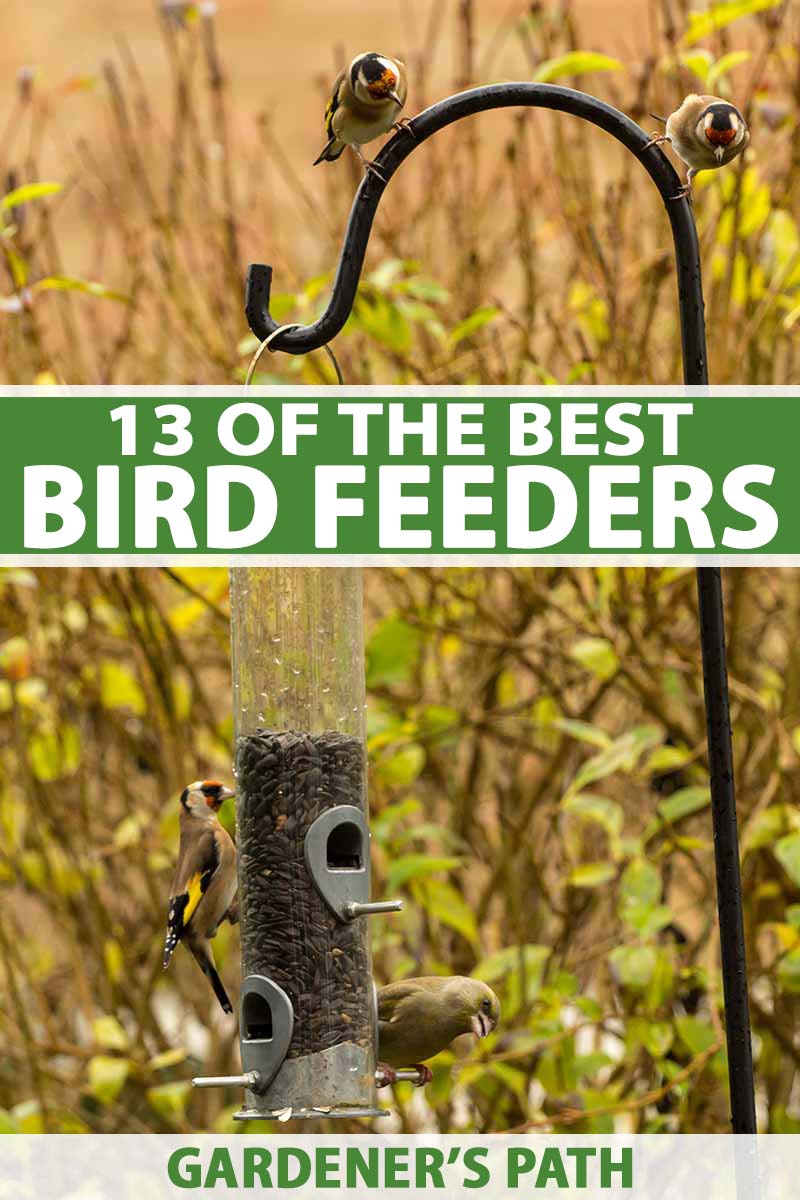
Credit: gardenerspath.com
Types Of Peanuts To Use In Your Bird Feeder
Discover the best types of peanuts to use in your bird feeder for a delightful feeding experience for your feathered friends. Provide them with a variety of peanuts to enjoy and attract a diverse range of bird species to your garden.
When it comes to attracting birds to your backyard, using the right type of peanuts in your bird feeder can make a big difference. Birds are particularly fond of peanuts as they are a great source of protein and fat.
Whether you choose raw peanuts, roasted unsalted peanuts, or peanut pieces and shells, each type has its own benefits. Let’s take a closer look at the different types of peanuts you can use to attract beautiful feathered friends to your yard.
Raw Peanuts:
- Raw peanuts are unprocessed and have not undergone any cooking or roasting.
- They are a natural choice for bird enthusiasts who want to provide their feathered friends with a nutritious and unaltered food source.
- Some bird species, such as Blue Jays and Woodpeckers, prefer raw peanuts due to their softer texture and higher oil content.
- Raw peanuts can be easily found in pet stores or online, ensuring a readily available food source for your avian visitors.
Roasted Unsalted Peanuts:
- Roasted unsalted peanuts offer a slightly different taste profile compared to raw peanuts.
- The roasting process adds a subtle, nutty flavor that may appeal to a wider variety of birds.
- By choosing unsalted peanuts, you provide a healthier alternative for the birds as excessive salt consumption can be harmful to their health.
- Roasted unsalted peanuts are widely available in grocery stores and can be easily incorporated into your bird feeder setup.
Peanut Pieces And Shells:
- Peanut pieces and shells are a versatile option, especially if you are looking to attract smaller bird species.
- These broken or crushed peanut bits are easier for birds to handle and consume.
- Birds such as finches, sparrows, and chickadees are often drawn to peanut pieces as they can quickly grab and enjoy the morsels.
- Additionally, the presence of peanut shells in your bird feeder can also provide an extra source of nesting material for the birds.
By offering a variety of peanuts in your bird feeder, you cater to the diverse preferences of your backyard birds. The choice between raw peanuts, roasted unsalted peanuts, or peanut pieces and shells depends on the species you wish to attract and the availability of these options.
So, go ahead and experiment with different types of peanuts to create a bird-friendly buffet that will keep your feathered visitors coming back for more.
Maintenance And Cleaning Of Peanut Bird Feeders
Proper maintenance and cleaning of peanut bird feeders is essential for attracting and feeding birds. Regularly clean the feeders to prevent mold and bacteria growth, and refill them with fresh peanuts to keep the birds well-fed.
Peanut Bird Feeders: Maintenance And Cleaning
Peanut bird feeders are a fantastic way to attract a variety of birds to your garden while providing them with a nutritious snack. To ensure the health and safety of the feathered visitors, it’s important to establish a regular cleaning routine, remove debris, prevent mold, and keep squirrels and other pests away from the feeders.
Regular Cleaning Routine:
Maintaining a clean peanut bird feeder is crucial for the well-being of the birds and to prevent the spread of diseases. Here are some tips for establishing a regular cleaning routine:
- Wash the feeder at least once every two weeks.
- Use warm water and mild soap to clean the feeder.
- Thoroughly rinse the feeder to remove any soap residue.
- Allow the feeder to dry completely before refilling it with peanuts.
Removing Debris And Preventing Mold:
Debris and mold can quickly accumulate in peanut bird feeders, posing health risks to the birds. Here’s how you can keep your feeder debris-free and prevent mold growth:
- Regularly check the feeder for any debris such as shells or bird droppings.
- Remove any debris using a small brush or by rinsing the feeder with water.
- Prevent mold growth by ensuring the feeder is completely dry before refilling it with peanuts.
- Store peanuts in a cool, dry place to prevent mold formation before filling the feeder.
Keeping Squirrels And Other Pests Away From The Feeder:
Squirrels and other pests can be a nuisance when it comes to peanut bird feeders. Here are some effective methods to keep them away:
- Place the feeder in a location that is difficult for squirrels to reach, such as on a pole with a squirrel guard or hanging it from a tree branch.
- Consider using a squirrel-proof feeder designed specifically to keep squirrels from accessing the peanuts.
- Avoid placing the feeder near trees or structures that may provide easy access for squirrels or other pests.
- If necessary, consider using a bird feeder pole baffler or squirrel repellent to deter unwanted visitors.
By following these maintenance and cleaning tips, you can ensure that your peanut bird feeder remains a clean and safe haven for the birds, while also deterring squirrels and other pests. Enjoy the delightful presence of colorful feathered friends in your garden with a well-maintained peanut bird feeder.
Tips For Attracting Colorful Birds To Your Peanut Bird Feeder
Looking to attract vibrant birds to your peanut bird feeder? Follow these expert tips to create a colorful bird haven in your backyard.
Having a peanut bird feeder in your yard can be a delightful way to attract a wide range of colorful birds. These vibrant visitors can add a splash of beauty to your outdoor space and bring joy to your bird watching experience.
To increase the chances of attracting colorful birds to your peanut bird feeder, consider implementing the following tips and creating a welcoming environment for your feathered friends:
Providing A Variety Of Perching Options
- Offer different types of perches: Colorful birds have different preferences when it comes to perching. By providing a variety of perch options, you can cater to the unique needs and habits of various species. Here are some perching ideas to consider:
- Thin perches for smaller birds like finches and sparrows.
- Sturdy perches for medium-sized birds like robins and bluebirds.
- Platform perches for larger birds like cardinals and jays.
- Adjust the height: Some colorful birds prefer to feed at different heights. By positioning your peanut bird feeder at various heights, you can attract a greater diversity of species. Consider placing one feeder at ground level for ground-feeding birds and another at eye level for perching birds.
- Add perching spots nearby: Colorful birds like to observe their surroundings before approaching a bird feeder. By adding natural perching spots near your feeder, such as bushes, trees, or a birdhouse, you can make the area more appealing and create a sense of safety for the birds.
Offering Other Bird-Friendly Features In Your Yard
- Plant native flora: Colorful birds are often attracted to native plants that provide food, shelter, and nesting opportunities. Incorporating native trees, shrubs, and flowers into your yard can enhance its overall appeal to these birds. Research the local flora that colorful birds are known to prefer and incorporate them into your landscaping.
- Provide water sources: Colorful birds require water for drinking and bathing purposes. By offering a bird bath, a shallow dish of water, or a small fountain in your yard, you can entice these feathered beauties to visit. Remember to change the water frequently to maintain its cleanliness and freshness.
- Create sheltered areas: Colorful birds seek shelter to rest and protect themselves from harsh weather conditions and predation. Provide nesting boxes or birdhouses in your yard to offer suitable nesting sites for these birds. Ensure that the birdhouses are appropriately sized and positioned to accommodate the needs of different species.
Creating A Welcoming Environment For Colorful Birds
- Keep the feeder clean: Dirty feeders can discourage colorful birds from visiting. Regularly clean your peanut bird feeder to remove any mold, bacteria, or old food. This not only ensures the health of the birds but also maintains the attractiveness of your feeder.
- Offer a variety of food sources: While peanuts are a favorite of many colorful birds, providing a diverse range of food can attract a greater variety of species. Consider offering different types of seeds, suet, or fruits that are known to appeal to colorful birds.
- Maximize visibility: Colorful birds are often drawn to feeders that are easily visible and accessible. Place your peanut bird feeder in an open area where the birds can easily spot it. Avoid placing it too close to windows to prevent bird collisions.
By implementing these tips, you can optimize your chances of attracting a vibrant array of colorful birds to your peanut bird feeder. Remember, patience and persistence are key, as it may take time for the birds to discover and frequent your feeder.
Enjoy the beauty and excitement of observing these stunning avian visitors in your yard!
Troubleshooting Common Issues With Peanut Bird Feeders
Discover effective troubleshooting tips to tackle common issues with peanut bird feeders. Get expert advice on keeping these feeders clean, preventing squirrel interference, and ensuring a steady supply of peanuts for your feathered friends.
Peanut bird feeders can be a wonderful addition to your backyard, attracting a variety of beautiful and entertaining birds. However, like any bird feeder, there can be some common issues that you may encounter. Here, we will discuss three common problems and how to address them effectively.
Dealing With Aggressive Birds:
- Bird feeders can sometimes become a battleground as more dominant birds chase away smaller species. Here are a few tips to manage this issue:
- Offer multiple feeding areas: Providing multiple peanut bird feeders in different locations can help to spread out the birds and reduce aggressive behavior.
- Adjust the spacing: If you notice that one feeder is attracting more aggressive birds, try repositioning it or changing the spacing between feeders.
- Use larger feeders: Larger feeders with multiple perches can accommodate more birds at once, reducing competition.
Preventing Seed Spoilage And Waste:
- Peanut bird feeders can be prone to seed spoilage, leading to waste and potentially attracting pests. Here are some ways to prevent these issues:
- Choose high-quality peanuts: Opt for fresh, high-quality peanuts that are less likely to spoil quickly.
- Provide small quantities: Only offer enough peanuts for a day or two to minimize the risk of spoilage.
- Keep feeders clean: Regularly clean the feeders to remove any moldy or spoiled peanuts. This will also help prevent the spread of diseases among the birds.
Addressing Issues With Squirrels And Other Unwanted Visitors:
- Squirrels and other unwanted visitors can swiftly empty your peanut bird feeders. Here are a few strategies to keep them at bay:
- Use squirrel-resistant feeders: Look for peanut feeders designed with features like metal cages or weight-activated mechanisms that prevent squirrels from accessing the food.
- Place feeders strategically: Position feeders away from overhanging branches or other structures that squirrels can use to jump onto the feeder.
- Provide alternative food sources: Set up squirrel-friendly feeding stations with their preferred foods to divert their attention from the bird feeders.
By being proactive and addressing these common issues, you can ensure that your peanut bird feeders continue to attract and delight a wide array of beautiful birds. Experiment with different strategies and find what works best for your specific situation.
Happy birdwatching!
Observing And Enjoying Colorful Birds At Your Peanut Bird Feeder
Discover the joy of observing colorful birds visiting your peanut bird feeder. With their vibrant plumage and playful antics, these feathered visitors will captivate your senses and add a touch of natural beauty to your backyard oasis.
Imagine stepping into your backyard and being greeted by a vibrant array of colorful birds, all gathering around your peanut bird feeder. It’s an enchanting sight, one that can bring you joy and a deeper appreciation for nature. In this section, we’ll explore how you can identify different bird species, document their behavior and feeding patterns, and enhance your overall bird-watching experience.
Identifying Different Bird Species:
- Look for distinct physical characteristics to recognize various bird species.
- Pay attention to size, shape, color, and markings.
- Consult field guides or online resources for species identification.
- Keep a bird journal to note the different species you spot.
Documenting Bird Behavior And Feeding Patterns:
- Observe how birds interact with the peanut bird feeder.
- Take notes on their feeding habits and preferences.
- Record any interesting behaviors or interactions you witness.
- Photograph or even record videos to capture moments of interest.
Enhancing Your Bird-Watching Experience:
- Create a cozy and comfortable bird-watching spot near the feeder.
- Use binoculars to get a closer look at the birds.
- Set up a bird bath or water feature nearby to attract even more birds.
- Plant native flowers and shrubs to provide additional food sources.
- Install cameras or webcams to monitor bird activity when you’re not around.
Observing and enjoying colorful birds at your peanut bird feeder can be a rewarding and relaxing experience. By identifying different bird species, documenting their behavior and feeding patterns, and taking steps to enhance your bird-watching environment, you’ll create an inviting haven for these beautiful creatures right in your own backyard.
So grab a comfortable chair, a pair of binoculars, and get ready to immerse yourself in the wonders of nature.
Additional Ways To Attract Colorful Birds To Your Yard
Attract vibrant birds to your yard with peanut bird feeders, a popular choice for bird enthusiasts. These feeders provide a tasty and nutritious snack that colorful birds are sure to love, adding a delightful touch to your outdoor space.
Creating A Diverse Habitat:
- Include a variety of plants in your yard that provide both food and shelter for birds.
- Plant native species that are adapted to your area’s climate and attract local bird species.
- Add a diversity of plant heights, including trees, shrubs, and flowers, to create different levels for birds to perch and nest.
- Incorporate water features like bird baths or small ponds to attract birds seeking a water source.
Using Vibrant Bird Feeders And Accessories:
- Choose bird feeders in bright colors like red, yellow, or orange, as these shades are attractive to birds.
- Opt for feeders with multiple perches and feeding ports to accommodate several birds at once.
- Use feeders with protective features like squirrel guards or sturdy construction.
- Consider adding accessories such as birdhouses, birdbaths, or hanging plants near the feeders to enhance their appeal.
Providing Nesting Sites And Natural Food Sources:
- Install birdhouses or nesting boxes suitable for different bird species, with appropriate entry hole sizes and nesting materials.
- Create brush piles or leave fallen branches for birds to use as natural nesting areas.
- Plant flowering plants that produce berries or seeds, providing birds with natural food sources.
- Avoid the use of pesticides and herbicides, as these can harm birds and their food sources.
By creating a diverse habitat, using vibrant bird feeders and accessories, and providing nesting sites and natural food sources, you can attract a wide array of colorful birds to your yard. These efforts not only make your outdoor space more visually appealing but also provide essential resources for the birds, contributing to their overall well-being.
Frequently Asked Questions For Peanut Bird Feeders
Do Peanut Bird Feeders Work?
Yes, peanut bird feeders do work. They are effective in attracting birds, especially species that enjoy eating peanuts. The feeders are designed with ports or mesh openings that allow birds to access the peanuts easily. Birds such as woodpeckers, jays, chickadees, nuthatches, and finches are commonly attracted to peanut feeders.
Using peanut bird feeders is a great way to provide a high-energy food source for birds. Peanuts are rich in fats, proteins, and nutrients, providing birds with the necessary energy to survive and thrive. It is important to note that while peanut feeders are effective, they should be placed in a location that is safe for the birds and protected from predators.
Regular cleaning and maintenance of the feeders are also essential to keep them hygienic and prevent the spread of diseases among the birds.
What Kind Of Bird Feeder Do Peanuts Eat?
Peanuts are loved by a variety of birds. To attract them to your yard, choose a platform feeder or a mesh tube feeder. These types of feeders are suitable for peanuts. The platform feeder has a flat surface where birds can easily access the peanuts.
The mesh tube feeder has small openings that allow birds to peck at the peanuts. Both feeders provide easy access for birds to enjoy their favorite snack. Remember to keep the feeders clean and refilled to attract more feathered friends.
What Is The Best Peanut Bird Feeder?
The best peanut bird feeder varies depending on your specific needs and preferences. However, some popular options include the Brome Squirrel Buster Classic Feeder and the Woodlink Absolute II Squirrel Resistant Feeder. Both of these feeders are designed to keep squirrels and larger birds from accessing the peanuts, ensuring that only smaller birds can enjoy them.
Another great option is the Droll Yankees Squirrel Proof Bird Feeder, which features a weight-activated mechanism that closes off access to the peanuts when a squirrel or larger bird tries to land on the feeder. Ultimately, the best peanut bird feeder for you will depend on factors such as budget, size, and the bird species you want to attract.
It is recommended to read customer reviews and compare different models before making a decision.
What Do You Put In A Peanut Feeder For Birds?
Fill a peanut feeder for birds with unsalted peanuts. Birds are attracted to the high protein content in peanuts, which provides them with essential nutrients for growth and energy. Ensure the peanuts are free from any seasoning or salt, as they can be harmful to birds.
Place the peanut feeder in a secure location, such as hanging from a tree branch or on a bird feeding station. This will offer birds easy access to the peanuts while keeping them safe from predators. Regularly clean and refill the feeder to maintain its freshness and appeal to birds.
Providing a peanut feeder will invite a variety of bird species to your garden, allowing you to enjoy their presence and support their well-being.
Conclusion
Peanut bird feeders can be a valuable addition to any backyard or garden. With their ability to attract a wide variety of bird species, these feeders offer hours of entertainment and a chance for birdwatchers to observe nature up close.
By providing a safe, reliable food source for birds, peanut feeders contribute to the overall health and well-being of local bird populations. The simplicity and affordability of these feeders make them a popular choice for both beginner and experienced bird enthusiasts.
Remember to choose a sturdy feeder and offer high-quality, unsalted peanuts to ensure the birds receive maximum nutritional benefits. Whether you’re a casual observer or a passionate birdwatcher, peanut bird feeders are a fantastic way to create a welcoming environment for our feathered friends.
Happy birding!

